H1 2019 – UK Top 10 Fastest National Broadband and Mobile ISPs

Before moving on to mobile operators we’re going to examine how some of the more established alternative network (AltNet) providers – those that have built their own physically separate networks – compare with the mainstream national ISPs. Sadly most altnets only have comparatively niche network coverage and limited speedtest data, which means that at present we can only summarise a few.
Excluding KCOM, which continue to have a large proportion of customers on older copper line services in East Yorkshire, almost all of the altnets below tend to exclusively build “full fibre” (FTTP) infrastructure, which is capable of offering Gigabit (1Gbps) class broadband speeds. We should add that the results for Wessex Internet cover both their fixed wireless and FTTP network.
The performance scores recorded below may of course be lower due to all of the data caveats mentioned earlier (slow Wi-Fi, package choice etc.). In order to save space we’ve also adopted a slightly different table format by sticking the 2019 H1 and 2018 H2 results side-by-side in the same columns. NOTE: DL = Download, UP = Upload.
Advertisement
Altnets by Average Speed (2019 H1 vs 2018 H2)
| ISP | DL 2019 (2018) | UP 2019 (2018) | Top 10% DL 2019 (2018) |
| Community Fibre (FTTP) | 242.1Mbps (413Mbps) | 30.5Mbps (539.2Mbps) | 241.5Mbps (686.2Mbps) |
| Vodafone (FTTP Only) | 163.7Mbps (no data) | 95.8Mbps (no data) | 378.8Mbps (no data) |
| Truespeed (FTTP) | 156.2Mbps (no data) | 136.4Mbps (no data) | 346.2Mbps (no data) |
| Wessex Internet (FTTP, Wireless) | 128.8Mbps (no data) | 42.4Mbps (no data) | 311.2Mbps (no data) |
| Hyperoptic (FTTP) | 120.5Mbps (116.6Mbps) | 90.8Mbps (101.1Mbps) | 310.9Mbps (256Mbps) |
| KCOM (FTTP Only) | 117.6Mbps (no data) | 33.7Mbps (no data) | 246.6Mbps (no data) |
| KCOM (FTTP, FTTC, ADSL) | 105Mbps (60.4Mbps) | 30.5Mbps (14Mbps) | 241.5Mbps (191.8Mbps) |
| Gigaclear (FTTP) | 89.6Mbps (96Mbps) | 69.4Mbps (87Mbps) | 249.3Mbps (199.3Mbps) |
| B4RN (FTTP) | 25.4Mbps (113.7Mbps) | 42.6Mbps (73.7Mbps) | 84.4Mbps (270.2Mbps) |
Clearly nearly all of these altnets are delivering better speeds than the largest national providers above and it will probably stay that way until general FTTP availability improves. The government’s ambition is for “nationwide” coverage of “full fibre” networks by 2033.
Meanwhile we consider B4RN to be somewhat of an anomaly this time around (their score is way below what we know their network can actually deliver). Unusual variations in performance like this tend to be created by very small test samples and possibly the impact of weak WiFi connectivity. This is particularly odd since B4RN’s only package is a 1Gbps service, while the other ISPs all offer a choice of slower plans.
The Fastest Mobile Operators (H1 2019)
Accurately gauging performance on the four largest mobile network operators is perhaps an unrealistic expectation due to the very variable nature of the technology. Users of such services are always moving through different areas (indoor, outdoor, underground etc.) and the environment around them (weather, trees, buildings etc.) is similarly changeable.
Advertisement
Suffice to say that studies of mobile broadband performance should be considered open to variation, although the top networks tend to be those with a combination of the best 4G coverage, a good amount of radio spectrum and the most advanced technology (e.g. LTE-Advanced and Carrier Aggregation for harnessing multiple spectrum bands).
Right now EE, which claims to have the strongest level of geographic UK network coverage (around 91% and aiming for 95% by the end of 2020), is in the best position with regards to those aforementioned strengths. However this may start to change later in 2019 as the first commercial deployments of ultrafast 5G technology start to have an impact, but that will take several years to roll-out.
Average Mobile Download Speeds
| No. | Operator | 2019 H1 (Top 10%) | 2018 H2 (Top 10%) | Change |
| 1. | EE | 31.5Mbps (68.7Mbps) | 30.1Mbps (63.8Mbps) | +4.65% |
| 2. | Vodafone | 23.2Mbps (50.9Mbps) | 23.2Mbps (56.2Mbps) | 0% |
| 3. | Three UK | 17.9Mbps (41.6Mbps) | 17.7Mbps (41.1Mbps) | +1.13% |
| 4. | O2 | 17.2Mbps (38.3Mbps) | 14.6Mbps (33.1Mbps) | +17.81% |
Average Mobile Upload Speeds
Advertisement
| No. | Operator | 2019 H1 (Top 10%) | 2018 H2 (Top 10%) | Change |
| 1. | EE | 5.9Mbps (16.6Mbps) | 5.3Mbps (14.7Mbps) | +11.32% |
| 2. | Vodafone | 5.8Mbps (14.9Mbps) | 5.3Mbps (14Mbps) | +9.43% |
| 3. | Three UK | 5.3Mbps (14.4Mbps) | 4.6Mbps (12.8Mbps) | +15.22% |
| 4. | O2 | 5.1Mbps (13.9Mbps) | 4.2Mbps (10.9Mbps) | +21.43% |
Overall the average download speed of the four primary mobile operators was 22.45Mbps (up from 21.4Mbps at the end of 2018) and the average upload speed hit 5.53Mbps (up from 4.85Mbps). However the biggest change over the past 6 months appears to stem from bottom dwelling O2, which may be starting to benefit from its recent rollout of the new 2.3GHz band for 4G services (here).
As usual we must caveat that mobile services are subject to the daily movements and radically differing hardware choices (Smartphones etc.) of their end-users, as well as the different spectrum bands and network capacity available to any specific area or operator. All of this makes it painfully difficult to establish a reliable picture of performance.
We should point out that the current government has told all operators to deliver 95% geographic mobile coverage by the end of 2022 (here), although they didn’t specifically name drop 4G connectivity. A number of solutions to help achieve this (e.g. the Single Rural Network) are being considered and Ofcom’s forthcoming auction of the 700MHz band looks set to include new coverage obligations (here) but these are not yet set in stone.
Overall we do not consider the above speedtest based data – either for mobile or fixed lines – to be a reliable barometer for individual users, but it can help to highlight general changes in the market. The ever expanding reach of faster networks and take-up means that we will continue to see a general upward curve as consumers upgrade to use ever faster services.
Mark is a professional technology writer, IT consultant and computer engineer from Dorset (England), he also founded ISPreview in 1999 and enjoys analysing the latest telecoms and broadband developments. Find me on X (Twitter), Mastodon, Facebook, BlueSky, Threads.net and Linkedin.
« Consumer Complaints About UK Telecoms Services Rise in 2019






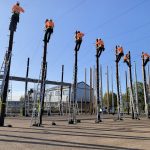
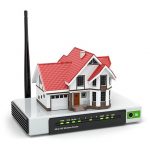
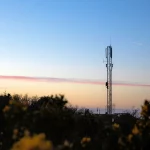




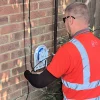

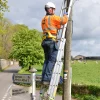







































Lovely source of information, but it seems that you haven’t covered the state of local infrastructure. I live in the S44 6xx area, and the infrastructure here is shocking. It’s all aluminium cable with non waterproof joints. We have FTTC available, but real world performance is no better, and in some cases worse, than ADSL2+.
It’s all well and good blowing the “98% availabilty of FTTC services” trumpet, but it’s painting a false picture.
Until openreach invest in infrastructure, I’ll be sticking to ADSL2+.
The article said speeds of 24Mbps+ are currently available to 96% of UK premises, which is across all fixed broadband networks (not only FTTC). However if the FTTC in your area delivers below 24Mbps and this isn’t due to a problem within your home then you’re not part of that 96%. You’re in the 4%.
https://labs.thinkbroadband.com/local/E10000007 covers infrastructure and speeds seen from people in the area.
Where superfast coverage is below the average at 95.5% but at a guess you are probably rural and for rural Derbyshire this drops to 89.3%.
Shouldn’t AAISP download show a negative change % due to a decrease in speed?
Yes, corrected, thanks for spotting.
Interesting data set. The point about geographic coverage needs exploring. Here in west Wales we are not well served by fixed line or mobile broadband. 5G has launched, but some operators only offer 3G on our local mast. There is no FTTP in our village and FTTC does not reach all cabinets (this is despite the millions of pounds of public money injected via the ‘Superfast Cymru’ project). So it’s ADSL2+ for many of us with no prospect of anything better for the foreseeable.
It’s worth noting that geographic coverage is only really relevant for mobile connectivity since fixed line services reflect targeted connections to properties, not wide area wireless signals like mobile.
B4RN customers who do speedtests don’t use the thinkbroadband speedchecker, they use ookla app as it is more reliable than a browser test. Tests over 900 symmetrical on ethernet are commonplace, but as people tend to test mainly on wifi it lowers the average. Still very nice to see the altnets knocking spots off the incumbent though. Power to the people.
They clearly do use the Think Broadband tester otherwise Think Broadband would have no data to publish.
I note that B4RN are showing deteriorating speeds on TB, really bad numbers, but fortunately the ‘quality score’ has improved. I wonder if there is a reason for that.
It is possible that mounting losses rather than weak wifi is in play here.
LOL I get 0.7 mbps in 2019 i live in rural area
I think your list is off I have changed VDSL networks loads and went back to Vodafone as hands down fastest VDSL line I ever had here as i use a custom modem that syncs at 80 down 20up and average speed test never under 65mbps, also vodafone is the cheapest in my area now
Why would that make the list off? The scores are all mean averages from lots of different tests, lines and packages. It’s not off just because you’re a lucky one in the 99% percentile of those.
That B4RN number is shocking. Is there something up with B4RN’s transit and peering?
The Ookla numbers may flatter however they do I believe run their own server in Lancaster. All well and good however the end users want to use the wider Internet, not just a server in Lancaster, so off-net servers give a more representative value.
The thinkbroadband test site is very flawed. I’ve barely ever achieved more than 40% of my max speed compared to many other test sites and gaming patcher programs
Some say flawed but it is able run at Gigabit speeds
https://www.thinkbroadband.com/speedtest/1559736900427166155
https://www.thinkbroadband.com/speedtest/1561199498111451855
Virgin Media M500
https://www.thinkbroadband.com/speedtest/1559429076698027955
Openreach 330 Mbps FTTP (Cornwall)
https://www.thinkbroadband.com/speedtest/1559672944315505255
Gaming patching programs are a classic example of using multiple hosts and many sources to overcome any individual peering issues at an ISP, as do a number of other testing sites. We have also seen other testers exceed the maximum speed possible across tested links by 25% so some are obviously doing some interesting maths.
Is the tester I wrote and run always 100% correct, but there is invariably a reason for the slower speeds and there have been a number of cases of ISP saying the test is broken only for issues to grow and they admit to issues with their own network in a couple of weeks/months once the issue has become even more visible.
“The thinkbroadband test site is very flawed.”
Agreed the TBB speed test is very flawed. To such an extent that when i run it on a BT FTTC connection i have, it will record between 50-62Mbps at best no matter what time of the day or night i run it (even stupid hours of 3 or 4am).
If i download their test files at https://www.thinkbroadband.com/download though again at any time of the day or night that gives my true 70-75Mb speeds. Every other speedtester ive come across including the likes of speedof.me, speedtest.net and many others all also record my correct 70-75Mb.
The TBB test also seems to give wild latency measures could be 10ms on one test and 60+ms on another seconds apart. Other speed tests its a constant figure (depending on which test, location etc you are running obviously).
Has always been like it for me. Was like it on my old ADSL connection is like it on the BT FTTC connection i make reference to and a VM connection i also have. SO nope not my end unless every connection ive every had has something wrong.
I wonder if they’re replying on speedtest servers being hosted within the ISP’s network, which conveniently means neither party has to pay for transfer, and the ISP doesn’t have to deal with external network quality?
As carriers of big data we enjoy a bit of analysis ourselves. However, this table is not representative of the top speeds our 1Gb customers receive. Hyperoptic’s 1Gb product has been consistently at the top of the Think Broadband speed tables this year and although we are passionate about delivering digital access to all, blending results from our best value entry level packages at 20/30Mb with incomparable data sets of customers on higher speed packages makes the rankings statistically invalid.
Hey I’ve been with virgin media for many many years while the download speeds are great they suck when it comes to gaming…. My sky broadband is supposed to be activated on the 9th Aug but I was wondering if it will be any better? I want to go with hyper optic but they are not available in my area
I get why people always think BT/Openreach are crap but tbf I live in the countryside and we have gone from a couple of megabits a second and thinking wow only an hour to download a movie etc to over 200Mbps and being able to download a movie in a minute.
It would be nice if we could get gigabit speeds at some point but I think the main focus now is to get the speeds we currently have to the last few houses that are in the middle of nowhere!
The amount of people that I have provided tech support for that only have 1-2Mbps is just unacceptable in this day and age and these people are literally feeling left behind!
I’m sure it can be done, profits aren’t everything and investing in this last 10% will be huge in the future when 5G masts go up that need high speed connections.